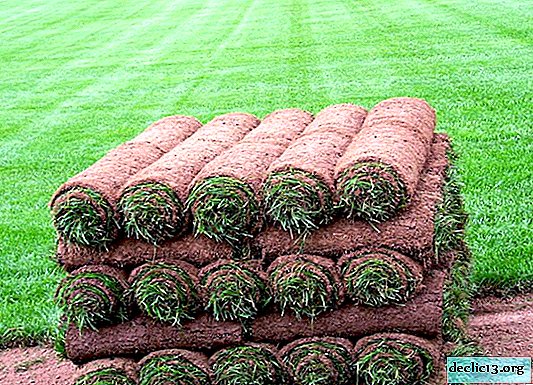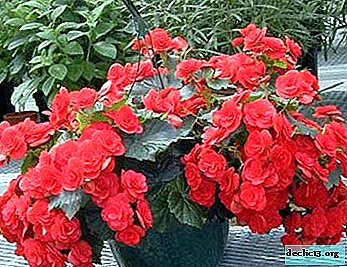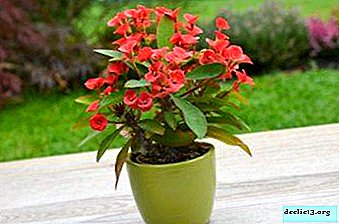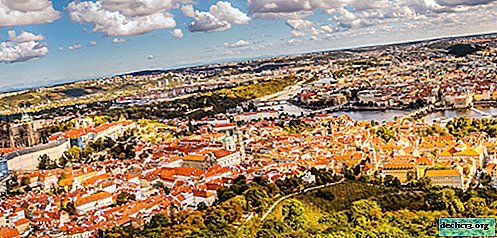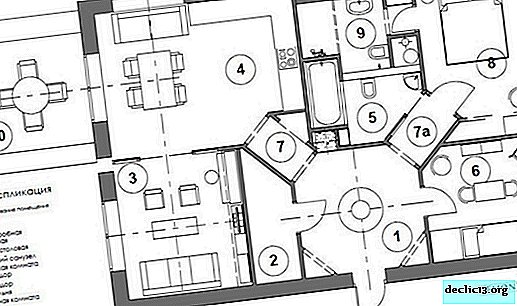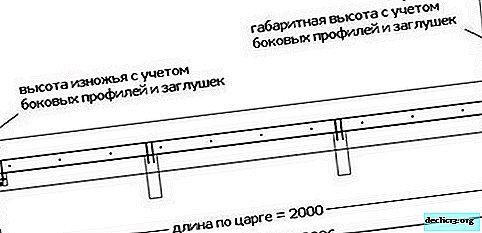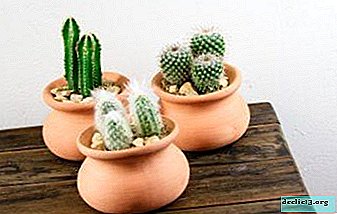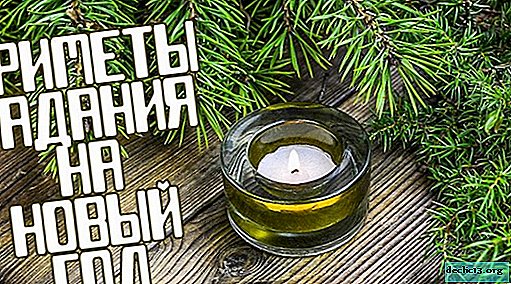How to transplant cyclamen?
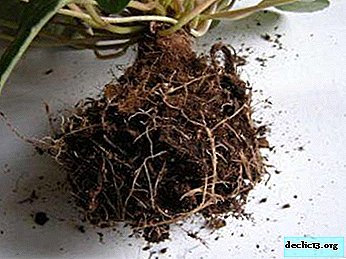
Blooming cyclamen resembles a flock of butterflies fluttering over a small island of lush green leaves. It can bloom not only in the warm season, but also in winter (this applies to individual varieties), which is especially pleasing to flower lovers and makes it a welcome gift.
How to care for this plant and when can I transplant it at home, when the bush becomes crowded in a pot? Today we will talk about this in detail in our article. Also watch a helpful video on the topic.
What it is?
ATTENTION: Cyclamen belongs to the subfamily of Mirsins, the order of heathers and the family of primroses. Tuberous plant, perennial. The tuber is round, slightly flattened, up to 10 cm in diameter. The height of the bush during flowering is about 30 cm.Also undersized varieties are found. The leaves are rounded heart-shaped on dark pink petioles; the color of the surface of the leaf is from dark green to silver with green. The flowers are five-petalled, radial, folded like butterfly wings, simple and double, one-color and two-color, and even in the shape of a bell.
The color of the flowers is different, mainly red and pink tones, as well as white and purple. More than 20 species of plants are cultivated: Cypriot, Neapolitan, European, Kos, Cretan, Persian, African, Colchis, ivy, and others (how to care for a Persian cyclamen at home can be found here). In our flower shops you can find cyclamen European and Persian.
Features
The main conditions for the comfortable existence of cyclamen in your home:
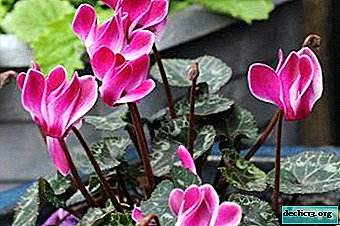 Diffused bright light (east, west windows).
Diffused bright light (east, west windows).- Cool air: in the summer of 17-20 ° C, in the winter of 10-15 ° C and even lower, the flower loves airing, but does not tolerate drafts.
- Abundant watering during flowering, spraying leaves until buds appear. It is best to pour cyclamen into the pan.
- Soil with an acidity of 5.5-6 pH (how to find the finished soil for cyclamen or make it yourself, you can find here).
- Fertilizing the flower with mineral fertilizers during the growth period of the leaf mass before flowering.
Cyclamen categorically does not tolerate tobacco smoke and even the smell of tobacco from a smoker.
The flower propagates both by seeds and division of the tuber, and transplanted it with the beginning of the growth period. Persian cyclamen tuber has roots only in the lower part, and European tuber on the entire surface. The shape of the Persian cyclamen tuber is more flattened than that of the European. Attempts to propagate cyclamen by cuttings never yield results.
Persian cyclamen does not give children, and the European forms new nodules on the main, which can be separated and transplanted.
Watch the video on the conditions for growing cyclamen:
Why is it necessary to transplant into another pot?
During the growth of a flower, its tuber grows in size. And since cyclamen, according to the rules, should be contained in a small pot, then it absorbs all the nutrients from the soil for the annual cycle of its life, and the soil is depleted.
Many beginning flower growers, not knowing this feature, do not understand why their green pet began to get sick, grow weak and stopped blooming, overfeed it with fertilizers, which only worsen its condition. In fact, he needs fresh soil and a new pot, suitable in size. However, there is an important caveat.
Can this be done during flowering?
 As a rule, flowering cyclamens are purchased in the store. The new owner can quickly find that the land in the purchase pot, to put it mildly, leaves much to be desired. When moving to a new place, cyclamen may drop for a while.
As a rule, flowering cyclamens are purchased in the store. The new owner can quickly find that the land in the purchase pot, to put it mildly, leaves much to be desired. When moving to a new place, cyclamen may drop for a while.
The natural impulse is to transplant the flower immediately. But is it possible to transplant blooming cyclamen? Would this procedure hurt him? The recommendations of the florists are unambiguous. If cyclamen is in bloom, no matter how much one wants to improve its conditions right now, it is better to refrain from transplanting. This is the golden rule of floriculture, and it applies to all indoor plants.
Transplanting is stressful for a plant, even if it is provided with a more nutritious environment.. A transplant during flowering can ruin the flowers and reduce the ability to bloom in the future. It is better to wait for the flowering to end and the plant to awaken after a dormant period, and to apply fertilizers only three months after purchase, in very small doses, and add them only to the pot pan.
IMPORTANT: Having transplanted cyclamen into fresh soil, the owner will immediately notice how the flower went to growth.Training
In order to properly transplant cyclamen into another pot at home, it is necessary to observe some rules. Since different types of cyclamen have different end dates for "sleep", the owner will have to orient himself on the appearance of new leaves on the tuber.
Persian cyclamen blooms in autumn and winter, goes to sleep for winter and spring, and wakes up in early summer. But with the European one must be very careful not to miss the beginning of the growth period, since it does not have a pronounced state of dormancy and can remain green all winter.
If your cyclamen is of a different, more exotic variety, be sure to check with the seller what conditions are necessary for the flower to fully exist. Some species of this plant prefer scarce soil.
Step-by-step instruction
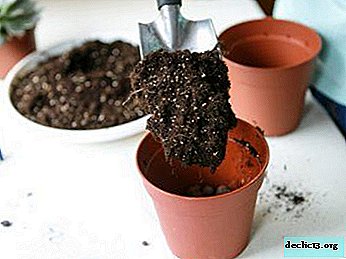 We decide on a pot. The pot may not be the most beautiful and suitable in color. The most important thing is its diameter. It is necessary to pick up the pot so that it is wider than the tuber by about 2-3 cm in diameter. Cyclamen loves crowding.
We decide on a pot. The pot may not be the most beautiful and suitable in color. The most important thing is its diameter. It is necessary to pick up the pot so that it is wider than the tuber by about 2-3 cm in diameter. Cyclamen loves crowding.In a wide pot, he will suffer and spends all his strength on the development of the root part, and not aboveground, because of this, its flowering will be sparse. A wide pot is one of the reasons why cyclamen does not bloom or throw flowers less than usual. Such a pot will have to be replaced at a certain time with a slightly closer one.
- What soil is needed. Soil for cyclamen must contain 3 parts of leaf soil and 1 part each, peat, sand and humus. You can add a little vermion or vermiculite. Or mix 1 part sand and 2 parts humus or peat.
The mixture is baked in the oven for about an hour to destroy insect larvae and flower-dangerous infections. For the purchased Tulip mixture, this is not necessary; it is completely ready for use.
- Tuber inspection and processing. The tuber should be carefully shaken off the old earth and inspected for rot and other irregularities. Damaged roots are removed and maintain the cut in a weak solution of potassium permanganate.
- Pot preparation and cyclamen planting. A little expanded clay or small shards are poured on the bottom of the pot, then soil and, finally, a tuber is planted, sprinkling it with soil on the sides.
The tuber of the European cyclamen does not need to be deepened completely, its tip should be at least a centimeter free from the ground, and in the case of Persian cyclamen, the tuber will have to be left one-third free from the top (we talked about the beneficial properties of cyclamen tubers and the rules for planting them in this article).
The earth is slightly tamped, carefully moistened, a little more earth is added, if it sank. The transplant is over.
Watch the video on the correct cyclamen transplant:
How to divide the plant?
Sometimes cyclamen grows strongly, and then it is necessary to divide its tuber to give each autonomy in the form of a separate pot. Again, this is only possible in the final stage of dormancy, when the flower is about to wake up. How to split cyclamen?
- The tuber is removed and dried.
- They carefully examine it for the presence of children (if it is European cyclamen) and choose places for dissection by the number of nodules with roots.
- Then they take a sharp knife, disinfect it and cut the tuber. Do not strive to obtain the maximum number of delenoks, sometimes it is enough to cut it into 2-4 parts.
- The resulting delenki is sprinkled with activated charcoal and dried in a shaded place during the day.
- Now you can plant them each in a new pot. Do not forget that cyclamen loves crowding. Irrigation and light conditions must also be strictly observed.
Do not damage the main point of growth, otherwise you can lose the flower. If everything was done correctly, new cyclamens will please flowering in six months. But nevertheless, flower growers believe that the method of dividing the tuber is very risky, and recommend that this flower be propagated by seeds.
Flower care after relocation
 Cyclamen loves coolness and diffused light, so it is advisable to give him a place on the east or west window, as an option - northeast or northwest.
Cyclamen loves coolness and diffused light, so it is advisable to give him a place on the east or west window, as an option - northeast or northwest.
Watering is best done in the pan or on the edge of the pot. Although the latter is very risky: if water gets to the growth point - tuber - plant, consider it ruined. The plant is much more loyal to underfilling than to overfilling.
Cyclamen can be sprayed while it builds up leaf mass. With the emergence of flowers, spraying should be stopped.
About a month after transplanting, the plant will need additional nutrition. It must be repeated once every 2-3 weeks throughout the flowering period.
When the cyclamen fades and goes to rest, cut it to a stump and place it in a cool dark place (for details on what care cyclamen needs during the rest period, read here). Occasionally you can water it, but very moderately. Do not store the bulb in the refrigerator.
Watch the video on cyclamen care after transplantation:
Interesting Facts
This flower has several names. Some of them sound funny: scum or pork bread (because cyclamen tubers really like piglets) - but the Alpine violet is quite consistent with its gentle nature. The name is correctly pronounced with emphasis on the first syllable: cyclamen, but people accentuated the accent in the French manner.
Cyclamen can adapt to higher indoor temperatures by increasing humidity. Since spraying is not always possible, you can get out of the situation by placing containers filled with wet expanded clay next to the flowers.

 Diffused bright light (east, west windows).
Diffused bright light (east, west windows). We decide on a pot. The pot may not be the most beautiful and suitable in color. The most important thing is its diameter. It is necessary to pick up the pot so that it is wider than the tuber by about 2-3 cm in diameter. Cyclamen loves crowding.
We decide on a pot. The pot may not be the most beautiful and suitable in color. The most important thing is its diameter. It is necessary to pick up the pot so that it is wider than the tuber by about 2-3 cm in diameter. Cyclamen loves crowding.
